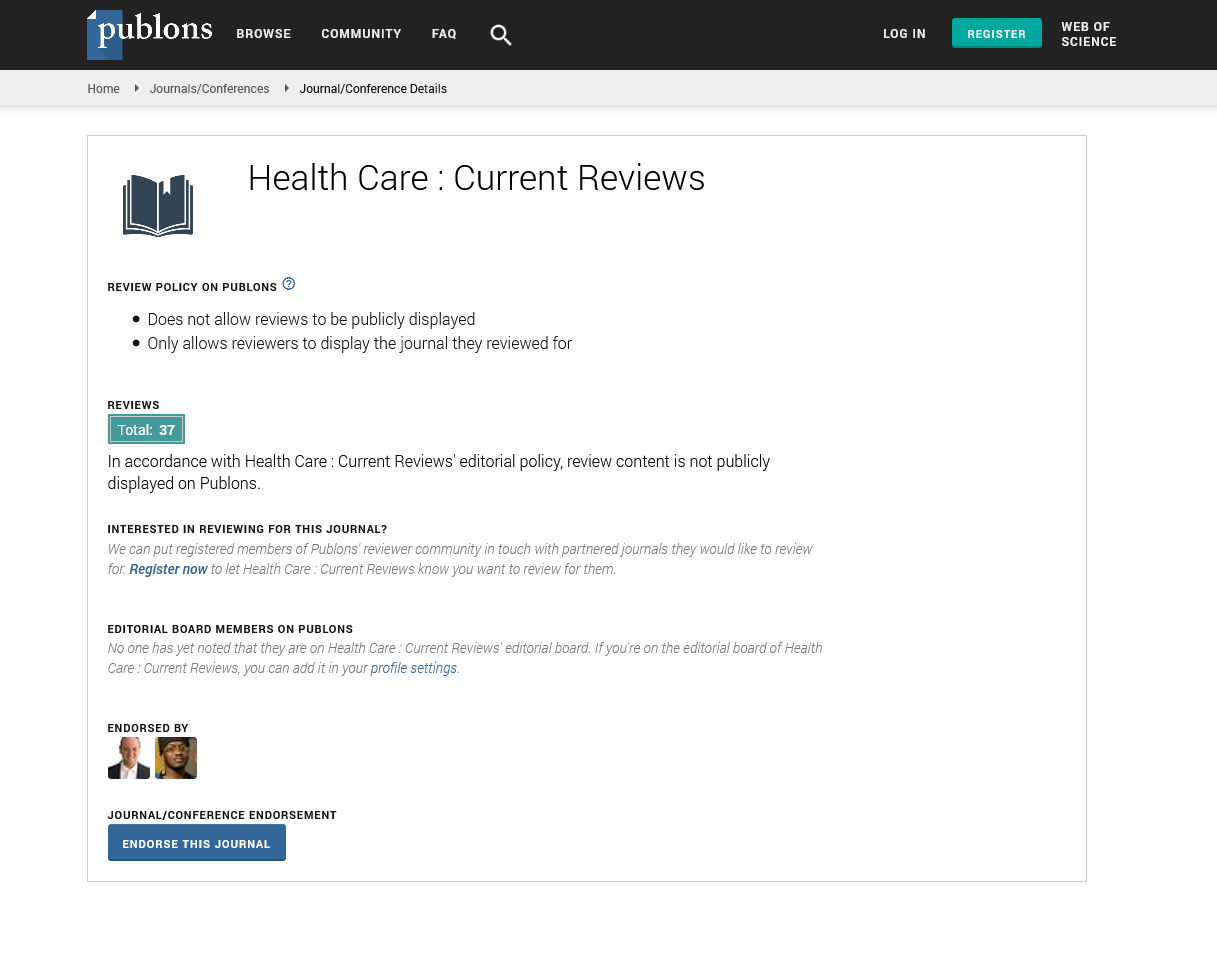Indexed In
- Open J Gate
- Academic Keys
- RefSeek
- Hamdard University
- EBSCO A-Z
- Publons
- Geneva Foundation for Medical Education and Research
- Google Scholar
Useful Links
Share This Page
Journal Flyer

Open Access Journals
- Agri and Aquaculture
- Biochemistry
- Bioinformatics & Systems Biology
- Business & Management
- Chemistry
- Clinical Sciences
- Engineering
- Food & Nutrition
- General Science
- Genetics & Molecular Biology
- Immunology & Microbiology
- Medical Sciences
- Neuroscience & Psychology
- Nursing & Health Care
- Pharmaceutical Sciences
Opinion Article - (2022) Volume 10, Issue 2
A Short Notes on Cutting Edge and Future of Surgery
Bob Ellison*Received: 01-Feb-2022, Manuscript No. HCCR-22-15942; Editor assigned: 04-Feb-2022, Pre QC No. HCCR-22-15942(PQ); Reviewed: 18-Feb-2022, QC No. HCCR-22-15942; Revised: 22-Feb-2022, Manuscript No. HCCR-22-15942(R); Published: 01-Mar-2022, DOI: 10.35248/2375-4273.22.10.278
Description
Surgery is a medical specialty that uses operative manual and practice techniques on an individual to investigate or treat a symptomatic condition such as a disease or injury, improve physical function, appearance, or mend unwanted fractured areas. In the forthcoming decade, in the next decade the line between digital technologies and the physical world becomes less concrete. Intelligent machines make better predictions and diagnoses and identify patterns in clinical data that improve patient care. State-of-the-art imaging technology allows surgeons to view anatomy in a way they have never been able to do and help guide their tools by making safer and more effective cuts.
The Future of Surgery
Machine Learning
Massive amounts of clinical data are being generated on a daily basis and researchers are looking for information that could unlock the secrets for better patient care. Venture capitalists are investing huge sums of money in big data because there have been interesting developments over the years in the process of transforming data science healthcare practice. Although there are not yet many products that allow the average surgical facility to utilize the power of data, pressing clinical information to improve surgical outcomes requires development that needs to be monitored. Imaging platforms can see what happens during surgery through computer algorithms connected to laparoscopic and arthroscopic cameras, which have significant clinical implications. Semi-intelligent computer systems trained on hundreds of thousands of hours of surgery video can detect specific stages of surgery, detect potential complications, and alert surgeons when they reach challenging parts of the procedure. The "Smart" systems can automate dictation by generating op notes as surgery progresses.
Augmented and virtual reality
These elegant technologies have a future in concept, but they are still in the early stages of adoption. As their hardware and software continue to evolve, training stimulators have the potential to enhance patient care by enhancing surgeon skills through surgical planning and intraoperative consultation. Surgeons wearing augmented reality headsets can send the operative site's point-of-view live feeds to outside experts anywhere in the world for real-time advice. Surgical team members wearing augmented reality headsets can also take patient records or pre-op pictures in a hands-free environment without taking their eyes off the sterile field.
3D printing
As the cost of printers decreases and materials become more abundant, technology is rapidly becoming a tool used in research and clinical setting to create non-reusable tools, highly customized implants and anatomical teaching aids.
Patient centered communication
It is never possible to use telemedicine to provide personalized care and the opportunity to stay in constant touch with patients through apps and online portals is truly amazing.
Surgeons should purchase in the belief that the addition of new technology will result in a significant clinical benefit and perioperative capabilities. There are two types of surgeons: young docs looking for innovative ways to establish their careers that are ready to try new things and experienced surgeons with surgical techniques and behaviors who do not need to adopt new techniques. Ultimately, surgeons have to trust the tools they use and changing their deep-rooted beliefs can often be challenging. But do not let the details obscure thoughts about what will happen next.
Conclusion
Ultimately, surgeons have to believe in the tools they use, and it’s often challenging to change their deep-rooted beliefs. But do not let the details obscure thoughts about what will happen next. Minimally invasive techniques have brought more advanced approaches to the outpatient setting and continue to develop techniques that enhance surgery. Keep an open mind about new developments in surgical innovations and the endless possibilities of the high-tech future of surgery.
Citation: Ellison B (2022) A Short Notes on Cutting Edge and Future of Surgery. Health Care Curr Rev. 10:278.
Copyright: © 2022 Ellison B. This is an open-access article distributed under the terms of the Creative Commons Attribution License, which permits unrestricted use, distribution, and reproduction in any medium, provided the original author and source are credited.

